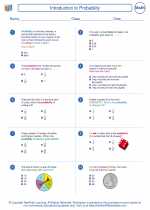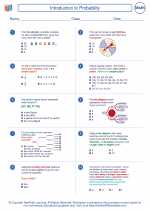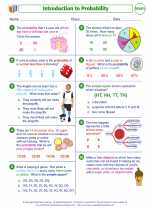Ascending Order
Ascending order is a way of arranging a set of numbers or objects from the smallest to the largest. When you have a list of numbers and you arrange them in ascending order, you start with the smallest number and end with the largest number.
How to Arrange Numbers in Ascending Order
Here are the steps to arrange numbers in ascending order:
- Compare the Numbers: Start by comparing the numbers in the list to find the smallest number.
- Place the Smallest Number First: Once you find the smallest number, place it at the beginning of the list.
- Repeat the Process: After placing the smallest number, repeat the process with the remaining numbers to find the next smallest number and place it after the first number.
- Continue until All Numbers are Arranged: Keep comparing and placing the smallest numbers until all numbers are arranged in ascending order.
Example:
Let's arrange the numbers 8, 3, 11, 5, and 2 in ascending order.
- Compare the numbers and find the smallest: 2
- Place 2 first: 2
- Repeat the process: 2, 3 (next smallest)
- Repeat the process: 2, 3, 5 (next smallest)
- Repeat the process: 2, 3, 5, 8 (next smallest)
- Repeat the process: 2, 3, 5, 8, 11 (next smallest)
So the numbers arranged in ascending order are: 2, 3, 5, 8, 11
Practice Questions:
Now let's practice some questions to reinforce the concept of ascending order:
- Arrange the following numbers in ascending order: 14, 7, 22, 5, 10
- Arrange the following numbers in ascending order: 3, 6, 1, 8, 4, 7, 2
By following the steps mentioned above, you can easily arrange the numbers in ascending order.
Conclusion
Understanding ascending order is essential in various mathematical and real-life scenarios. By arranging numbers in ascending order, you can easily identify the smallest and largest values in a set of data, making it a fundamental skill in mathematics.
Practice arranging numbers in ascending order to reinforce your understanding of this concept!
.◂Math Worksheets and Study Guides Seventh Grade. Introduction to Probability

 Worksheet/Answer key
Worksheet/Answer key
 Worksheet/Answer key
Worksheet/Answer key
 Worksheet/Answer key
Worksheet/Answer key
 Worksheet/Answer key
Worksheet/Answer key
